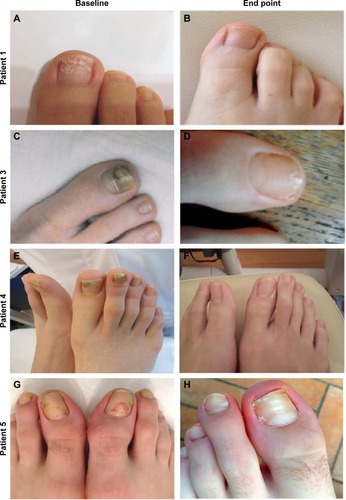Figures & data
Table 1 Clinical characteristics of patients
Figure 1 Representative clinical images of four patients at baseline and end point (12 weeks, topical tazarotene 0.1% gel therapy).

Figure 2 Semiquantitative evaluation of the clinical effect of topical treatment of tazarotene 0.1% gel.

Figure 3 Patients’ fungal culture test.

